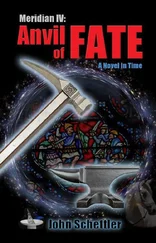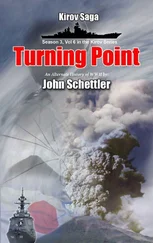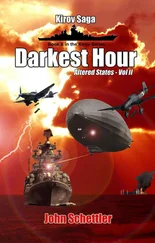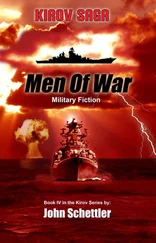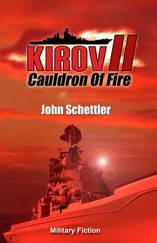John Schettler - Armageddon
Здесь есть возможность читать онлайн «John Schettler - Armageddon» весь текст электронной книги совершенно бесплатно (целиком полную версию без сокращений). В некоторых случаях можно слушать аудио, скачать через торрент в формате fb2 и присутствует краткое содержание. Жанр: Альтернативная история, на английском языке. Описание произведения, (предисловие) а так же отзывы посетителей доступны на портале библиотеки ЛибКат.
- Название:Armageddon
- Автор:
- Жанр:
- Год:неизвестен
- ISBN:нет данных
- Рейтинг книги:3 / 5. Голосов: 1
-
Избранное:Добавить в избранное
- Отзывы:
-
Ваша оценка:
- 60
- 1
- 2
- 3
- 4
- 5
Armageddon: краткое содержание, описание и аннотация
Предлагаем к чтению аннотацию, описание, краткое содержание или предисловие (зависит от того, что написал сам автор книги «Armageddon»). Если вы не нашли необходимую информацию о книге — напишите в комментариях, мы постараемся отыскать её.
Armageddon — читать онлайн бесплатно полную книгу (весь текст) целиком
Ниже представлен текст книги, разбитый по страницам. Система сохранения места последней прочитанной страницы, позволяет с удобством читать онлайн бесплатно книгу «Armageddon», без необходимости каждый раз заново искать на чём Вы остановились. Поставьте закладку, и сможете в любой момент перейти на страницу, на которой закончили чтение.
Интервал:
Закладка:
“Is that so…” The Lieutenant was stirring his coffee slower now, his attention finally focused on what the Ensign was telling him.”
“Yes sir. That baby should be fast asleep in the old Pavlovskoye underground shelter. They must be scraping the bottom of the barrel.”
“Let me see that photo, Keats.”
The Lieutenant was very interested now.
Chapter 5
Mississippi was not an old boat ready for retirement, but one of the newer Virginia class hunter killer subs on patrol that day-and Mississippi was ready. It had moved west as part of the Nimitz group undersea screen, but that job was handed over to two Los Angeles Class boats out of Apra Harbor, Guam under Task Force 74. This freed up the newer subs to get out and hunt enemy assets that might pose a grave threat. Seawolf was now looking for the Russian and Chinese Boomers, particularly the boat that had actually fired a sub launched missile over the continental US. It had good company from units out of San Diego, and the US was slowly scouring the Eastern Pacific throughout 3rd Fleet’s area of responsibility.
When Key West went down on close in reconnaissance of the Russian surface fleet, it left a big hole in Western Pacific coverage. Mississippi was reassigned to fill that hole, and was now on the prowl for anything the Russians might have left behind after their hasty withdrawal to the Sea of Okhotsk. Aside from the state for which she was named, the boat was also proud to bear the name of the old battleship that had been reputedly killed by a sub to begin the Second World War for the United States, BB-41.
But the new Mississippi (SSN-782) was nothing like the old battlewagon she was named for. She was commissioned into the navy in June of 2012 with a host of new technology that made her an evolutionary leap in undersea warfare. While not as fast or even well armed as the more powerful Seawolf, the Virginia class was much less expensive, and went on to become the primary replacement for the Los Angeles Class boats and the mainstay of the US undersea attack sub fleet.
It was one of the first submarines to forsake the time honored periscope for a newer “photonic mast,” which utilized an array of sensors, including thermographic and laser-based range finders, and high-definition low-light cameras. With no eyepiece, the old classic role of the sub Captain peering through his periscope and ‘dancing with the grey lady’ was now a thing of the past. Instead the mast was controlled by a joystick to pivot and present visual data relayed directly to several banks of computer monitors displayed in a large control room.
The workhorse of the sub’s sensor suite, of course, was her sonar, mounted in a spherical bow array with additional sensors in the sail and keel of the sub. These could be further augmented by both low and high frequency towed sonar arrays, and the equipment was so advanced that good operators claimed they could actually detect the sound of Russian sub crews talking to one another inside their old Kilo class boats, once called “the black holes of the sea” because they were so quiet.
The Kilos may have been quiet in their day, but that day was now long past. Advances in US sonar technology had now made any boat conceived and built before the 21st Century obsolete. Now the sonar operators would sit before wide panel computer monitors and watch a waterfall of green signal data tumbling down their screens, combining the visual sensory information with anything they might hear, just like old radar operators would monitor signals on their screen. Human eyes now joined ears in the assessment of the undersea environment. The waterfall of data would indicate noise for potential contacts as enhanced white areas within the falling green signal matrix, allowing the operator to watch the contact as much as he might hear it.
Information from all the ship’s systems became a data fusion that painted the overall picture of what was happening outside the boat. The net effect of all these listening arrays was to collapse the uncertainty factor, and winnow down the information to answer the same old questions. What was the contact? Where was it? What was it doing? The information was distilled into range, speed, bearing and heading, and the system was so good that operators could even hear sound from a ding on a ship’s propulsion blade. A library of sounds was recorded and stored on all contacts made, and various ships or subs could be quickly identified by their sonic “signature.”
Situated on the port side of the boat, the sonar operators now shared data with the combat system screens on the starboard side of the control room. Together they combined to give operators an overall “situational awareness” of the undersea environment around them that was unsurpassed.
At the same time, Mississippi was one of the quietest subs in the world, with new anechoic coatings, noise canceling technology, isolated deck structures and a novel design for a pump jet propulsor that did not use a rotating propeller and reduced noise from cavitation. It also removed the need for a long rotating drive shaft extending all the way to the boat’s reactor. The old hydraulic systems that once controlled rudders and fins were now replaced by a “fly by wire” electronic control system, further reducing noise. Inside the nuclear reactor that drove the ship, water was circulated without the need to rely on noisy pumps, adding additional stealth. All told, it was said by some that the new boats were quieter running at their flank speed than an older Los Angeles class boat was sitting idle at a berth in the harbor.
The business end of the boat when it came to war fighting was a set of four torpedo tubes firing the Mark-48 Mod 9 Torpedo. An old warrior from the late 1980s, the Mark 48 held on with many updates and modifications that now saw it capable of delivering a 650 pound warhead to a target well over 20 miles away at a speed of 40 to 55 knots. The boat also had 12 BGM-109 land attack Tomahawk cruise missiles.
So when war came to the Pacific, Mississippi was ready for anything the enemy could put in the sea. Her officers and crew were equally ready, and today she was commanded by Captain James Donahue, gliding silently through the waters off the southern coast of Hokkaido. The boat was beneath the big ash plume that had been blowing south from the Demon Volcano, snooping out any potential Russian sub activity there when it received new orders on its secure comm-link channel.
“What’s up, skipper.” The XO, Chris Chambers, was just getting the word now.
“COMSUBRON 7 wants us to transit the Tsugaru Strait tonight and take up a position here.” The Captain pointed at a location on the digital map, just west of the strait, out in the Sea of Japan. “It took them three tries to get us the message too. Communications have been a bear with that eruption still ongoing. In any case, we’re supposed to operate in loose cooperation with a Japanese task force coming out of Maizuru… a couple subs and a small surface action group.”
“Maizuru? That far south?”
“Chitose and Hachinohe have been forced to shut down operations, just like Misawa. That damn ash fall has practically blanketed all of Hokkaido. Magnetic disturbances have practically shut down most of the comm spectrum as well, so you can forget reliable sensor data from any land based facility there. The base at Maizuru is now top of the list for operations in the Sea of Japan. It’s far enough south and the airwaves are clear down there.”
“So they’re giving us the inside channel this time? I like it much better out in the deep blue.”
“They don’t think the action there is likely to heat up after that last engagement. Now everything seems to be focused on the Sea of Japan and points south. We’ll be playing flank guard on this team. The Japanese want to move up a sea interdiction patrol from Maizuru to monitor the corridor and watch for any new Russian sub deployments out of Vladivostok. Someone at Navy Intel got a hair up his ass and thinks that new Russian boat has slipped away.”
Читать дальшеИнтервал:
Закладка:
Похожие книги на «Armageddon»
Представляем Вашему вниманию похожие книги на «Armageddon» списком для выбора. Мы отобрали схожую по названию и смыслу литературу в надежде предоставить читателям больше вариантов отыскать новые, интересные, ещё непрочитанные произведения.
Обсуждение, отзывы о книге «Armageddon» и просто собственные мнения читателей. Оставьте ваши комментарии, напишите, что Вы думаете о произведении, его смысле или главных героях. Укажите что конкретно понравилось, а что нет, и почему Вы так считаете.


